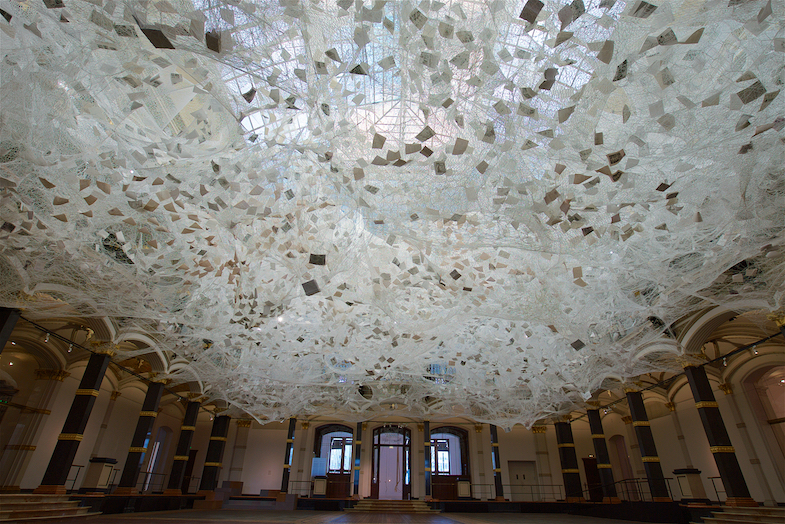CONVERSATIONS
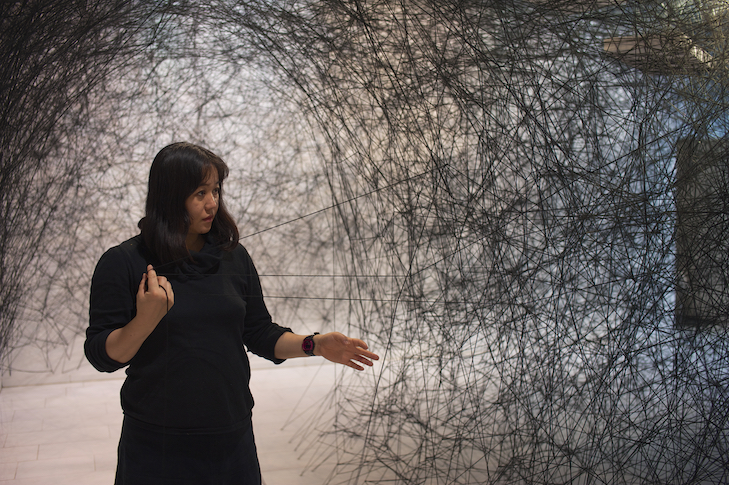
Coeur et Art editor Inga Nelli talked to Chiharu Shiota about identity, process, the meaning of colour and voids as an essential part of our life.
An Encounter: This might be the best way to describe the feeling when you meet Chiharu Shiota’s monumental and immersive thread installations for the first time. Regarding artist and theorist Lee Ufan, an encounter is a point at which a human being initiates a relationship with the material world.
Shiota’s works do exactly that. They traverse themes of relationships, identity and loss and are a highly personal mediation between the inner world of the artist and the outer world. Webs of threat spin like a cocoon around the viewer. Shiota draws lines with yarn in the air and spans connections between the physical body and what is beyond.
In her large-scale installation Beyond Memory that was part of the group exhibition And Berlin will always need you at the Gropius Bau, a network of white yarn is woven together with historical documents of the museum. The yarn creates tension like a human relationship – it tangles, it interacts, it creates voids and evokes memories. Something happens when you see it.
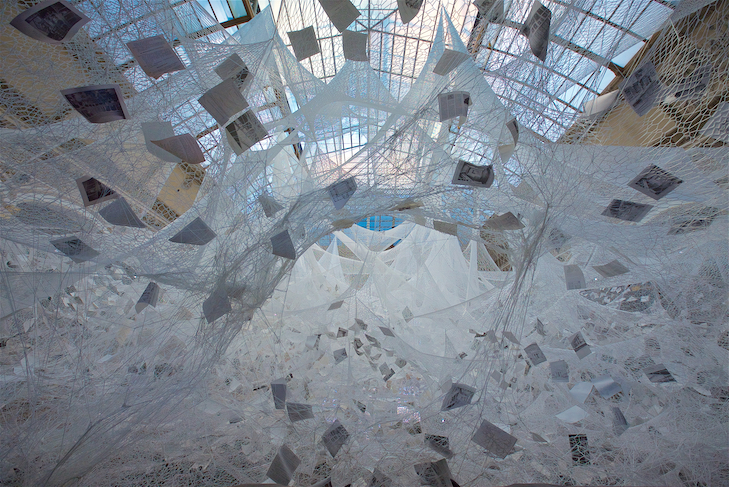
Identity Beyond Labels: Being “Chiharu Shiota”
You never wanted to be tagged as a Japanese or female artist but as Chiharu Shiota. For you, art is genderless and without national boundaries. When culture and gender do not define you as an artist, what defines Chiharu Shiota?
I think I am still searching, but I see myself mostly as an artist.

Drawing in Air: Extending the Line into Space
You started drawing on paper gradually which led to drawing in space and the transformation of two-dimensional marks into three-dimensional sculptural imprints.
What was the crucial moment when you decided that you need to enter another dimension?
During my second year of studying painting, I felt stuck because I thought drawing isn’t anything special. I could not create anything new; I was drawing like everybody else. I felt limited that is why I wanted to extend the line from the two-dimensional canvas into space.
I began drawing in the air.
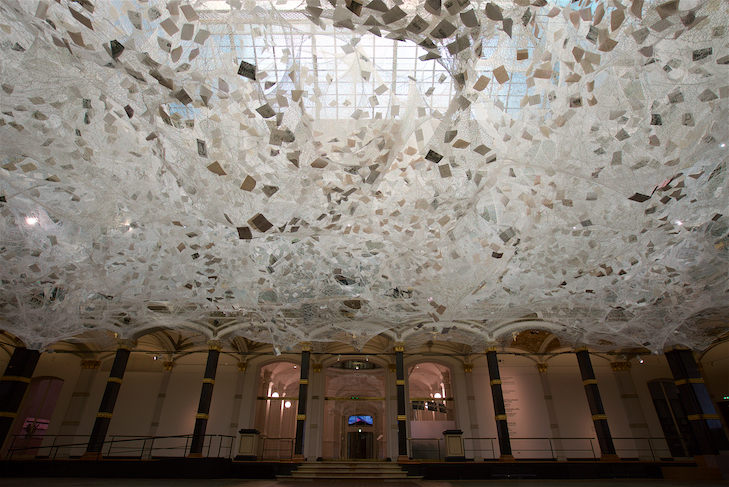
Weaving is an interesting act. Memories are „woven” into us all. Through weaving, we can repair things, connect things. What does the act of weaving mean to you?
I believe weaving may be the wrong expression, I do not weave in a traditional sense, I am drawing a line with the yarn, like a line in a painting, and these lines are entangled with each other, and knotted or cut just like relationships between humans.
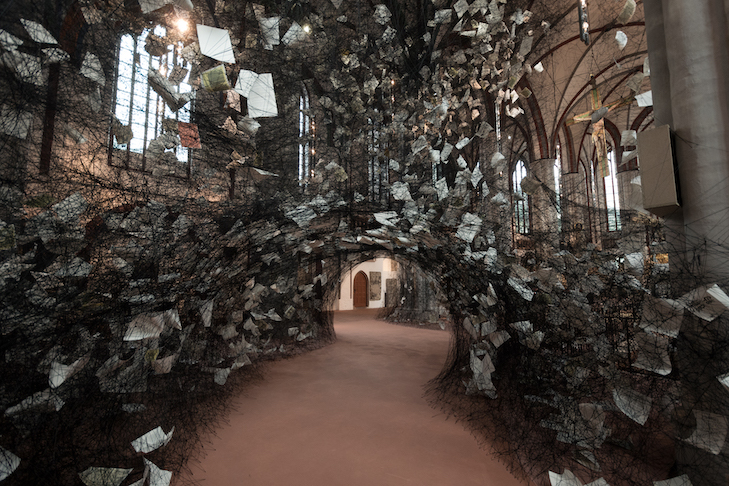
Colour & Voids: Lifelines Between Memory and Loss
Let us talk about voids. In an interview, you said that there is always a piece missing, a void that is part of your life. The yarn nets that you are weaving create a space yet it is also a cloud of voids or empty spaces. Homi Bhabha once wrote: “The void is, quite literally, the empty space of erasure and extermination: of missing persons, destroyed things, hidden histories, lost records, expropriated lands, murdered minorities” but he also defines the void as a transitional space. Did you ever think about voids in this context?
The concept of the void and a piece missing is very similar to me. But I do not think this missing piece can be filled. I think the children’s book ‘The Missing Piece” by Shel Silverstein describes this feeling very well. I like this story very much.
It is about looking for one’s missing piece and eventually finding it but shortly after the missing piece found, it is disregarded again for some reason.
The missing piece is somehow never filled.
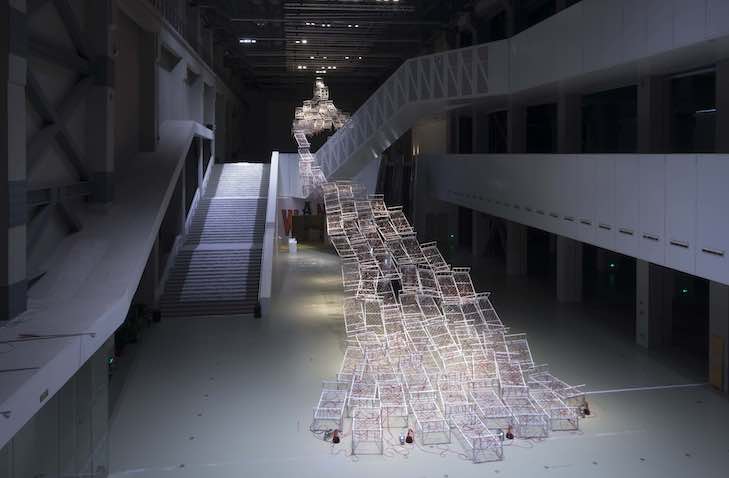
In The Key in the Hand, you developed a deeply personal work that was your response to the deaths of several close friends and relatives. Can art be detached from your own experience or personal history?
All my installations begin with a personal experience or emotion and then I want to expand it into something universal.
I want to connect with people through my art.
When I was collecting keys for my installation, many added a letter explaining the meaning of the key and very often it was key that had belonged to a loved one that had passed away.
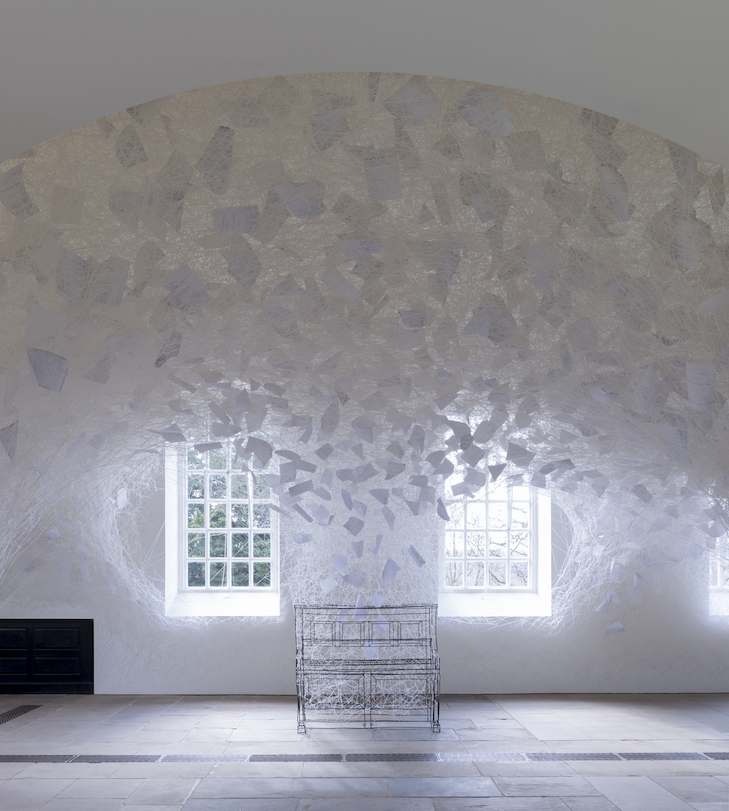
In the Gropius Bau installation, you are working with historical documents of the building. Which is the part of the building’s history that you most connect with or that inspired you to do the installation?
In 1911, there was an exhibition in the atrium of the Gropius Bau titled “Art History of Silk Weaving” which I am most drawn to. The exhibition displayed thousands of fabric samples from all over the world, enabling the visitor to experience and see new things.
I do believe that museums have the power to advance our life.

Most of your installation use either red or white yarn. I am interested in your interpretation of these colours and the reason behind the colour choice in your works. Louise Bourgeois once said: ‘Red is my favourite colour, definitely, it is violent. It is the colour of blood.‘’ Do you agree?
Yes, I agree. I think red is a powerful colour.
Because red is the colour of blood, it symbolizes the inside of the body, and therefore, it represents human connections and relationships.
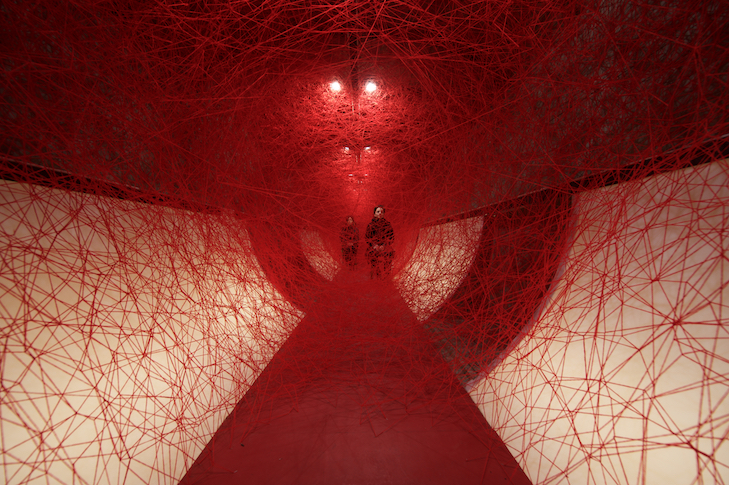

Colour interpretation is always bound to certain cultural aspects. The colour white in Asian cultures is perceived different to Western cultures. White inherently denotes death and mourning in some Asian cultures while in Europe for example, it is the colour for weddings. But either way, white also represents purity and truth. What were the reasons you chose for the Gropius Bau installation?
I have been experimenting with white since the beginning of 2017, I think the colour represents another aspect of human life, it is pure and timeless. Especially for the installation at Gropius Bau, I thought about the colour of silk, and because of the exhibition “The Art History of Silk Weaving” in 1911, it enabled me to draw a further connection.
We want to thank Chiharu Shiota and Atelier Shiota for their time and friendly cooperation.
Link to Chiharu Shiota’s Website
And Berlin Will Always Need You
Kunst, Handwerk und Konzept Made in Berlin | 22. März bis 16. Juni 2019
Mit Werken von Nevin Aladağ, Leonor Antunes, Julieta Aranda, Alice Creischer, Andreas Siekmann und die Arbeiter*innen von Brukman, Mariechen Danz, Haris Epaminonda, Theo Eshetu, Olaf Holzapfel, Dorothy Iannone, Antje Majewski und Olivier Guesselé-Garai, Willem de Rooij, Katarina Šević, Chiharu Shiota, Simon Wachsmuth und Haegue Yang
Gropius Bau | Niederkirchnerstraße 7 | 10963 Berlin
Mittwoch bis Montag 10:00 – 19:00
Author: Inga Nelli
